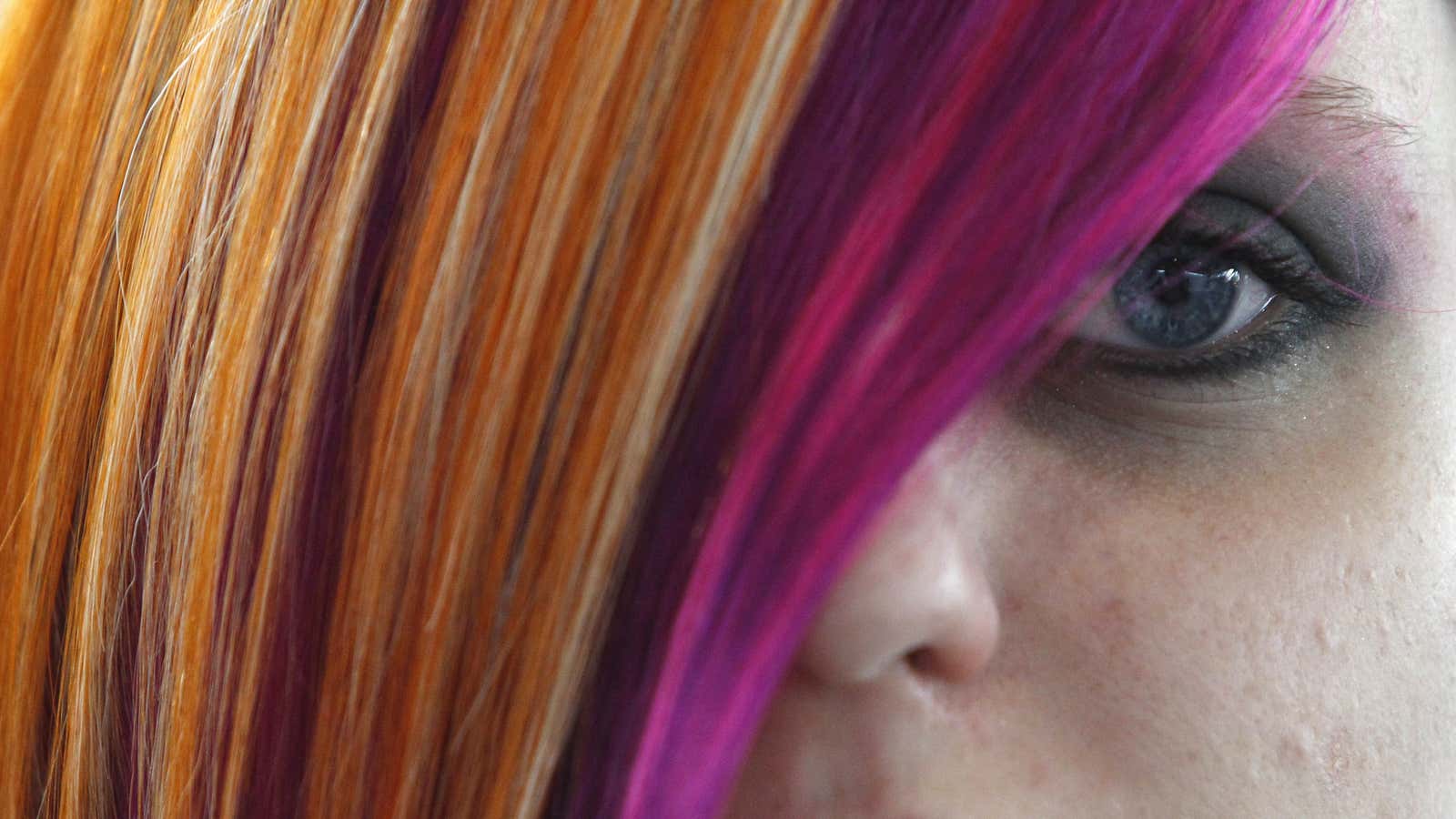I regularly manicure my nails, but rarely in traditional colors, such as red or pink. Instead, I conceive elaborate designs and work with artists to create art on the ten tiny canvases. My transient miniature finger paintings accompany me everywhere, including client meetings in traditional corporate boardrooms.
I’ve created nail designs that resemble watermelons to mark my excitement for the summer season or painted a reindeer on every finger closer to Christmas. On another occasion, I recreated a favorite painting, The Great Wave off Kanagawa, on a single nail and remixed the japanese woodblock print in corresponding colors on the remaining ones. While I was learning to code, I developed a working blackjack game and celebrated with a ‘Texas Hold ‘Em’ manicure.
When I speak with early career professionals through my work as a career coach, they share how they find it difficult sometimes to bring their full selves to work and how this impacts their perceived satisfaction in their jobs. Nail art is my small solution to this problem.
These acts of personal expression honor my diverse and evolving non-professional interests. When I offer them as displays in a work environment, I also share my most creative and innovative self with those around me. And without saying a word, this small display of what is interesting to me often prompts others to share what’s important to them. I connect more often and more authentically with everyone I meet, personally and professionally, and I’ve discovered a personal edge in greater confidence that comes from expressing my authentic self.
I’m not alone in finding a visual way to express myself at work. Increasingly amongst friends, clients, and colleagues, I’ve observed a clear and public stand for self-expression in the form of permanent markers, such as visible tattoos, or via fleeting ones, such as the colorful sock selections that men sport with increasing frequency today. And as more young professionals participate, I predict standards of etiquette and tolerance inside the workplace will shift.
This evolution in culture is being led by Millennials, who more so than previous generations want to work for employer brands that align with their personal ones and use Twitter and Instagram to vet companies for authenticity.
Self-expression via personal style also highlights our country’s shifting notions of sexual and gender identity. Re-appropriating traditional garb like the suit, tie or high-heeled shoe is also flouting traditional masculine and feminine norms when those identities are transforming. A conversation currently about bathrooms may shift focus to the board room in the coming years as the high costs for men and women of conformity to rigid, heteronormative standards are better understood.
How can employees and employers reduce their respective anxieties and create a more productive and inclusive future of work? For millennial professionals, I suggest they share with colleagues and managers what’s important to them by choosing self-expression through a medium such as personal style and reconsider their beliefs that those around them who may be unfamiliar are inherently unaccepting.
Employers targeting millennials can start by recognizing the link between their most urgent business objectives and self-expression. According to a recent PWC survey, 77% of CEOs name creativity as their greatest skill shortage, so providing an environment that actively fosters creativity is essential. Further, numerous studies have proven the positive impact on employee engagement, retention and performance when companies focus on individual expression rather than group
The workplace is changing more rapidly than ever before and a new wave of personal style choices is one prominent expression. Employees and employers can embrace and support respectively these changes knowing that they lead to better performance outcomes, greater innovation and deeper professional satisfaction for all.
Anastasia Alt is the founder and CEO of Pathspark.
